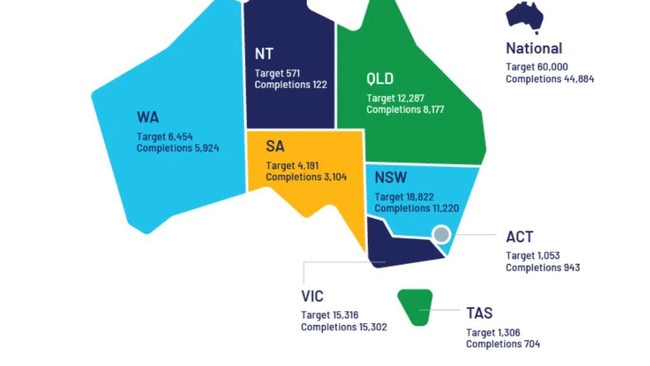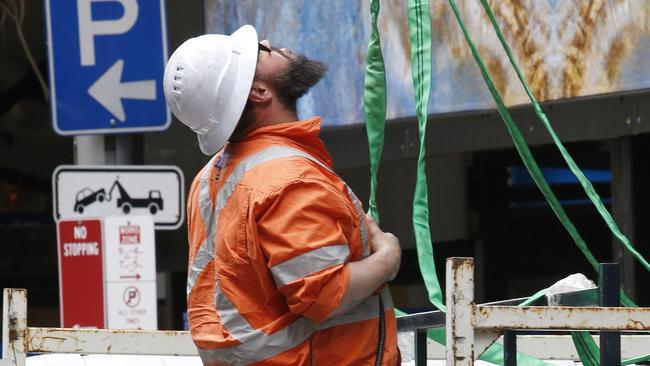Housing construction already 15,000 behind target
Australia has already fallen behind its newly created housing target, and if things don’t improve dramatically, the shortfall will be staggering.

Business Breaking News
Don't miss out on the headlines from Business Breaking News. Followed categories will be added to My News.
Australia is already falling behind its ambitious housing target just three months after setting the goal, official figures show.
Australian Bureau of Statistics data shows that in the first three months of the National Housing Accord, construction started on 43,247 homes.
Under the federal government’s plans, Australia needs to build 1.2 million new homes, or 60,000 new homes a quarter, by 2029.

While this is a strong improvement on the figures released in June, it means Australia is already more than 15,000 homes behind its target.
“Our new home target is much more than an arbitrary number. It is what’s needed to close the national housing supply shortage. It represents hard hats, steel caps and getting Australian families into the homes they deserve,” Property Council group executive policy and advocacy Matthew Kandelaars said.
“The work of the next term of the federal parliament needs a laser focus on helping states and territories do the heavy lifting required to meet our target. It’s evident from today’s data that some states are far better placed than others but all need a serious and immediate kick into action.
“The most urgent priorities are for states and territories to address affordability-killing taxes on new homes, cut red tape to boost productivity and address critical shortages of skilled labour.”

Master Builders Australia chief executive Denita Wawn said while the strong rebound in new detached house construction was welcomed by the industry, there was still a long way to go to reach the target of 1.2 million homes.
“Our performance in apartment construction will be the key to whether we meet the target,” she said.
“Apartment construction levels remain too low because the investment appetite is not there.
“If building activity continues at this pace, Australia will commence construction on just over 825,000 new homes over the next five years. This is around 350,000 new homes short of the Housing Accord target.”
Ms Wawn said building costs are up 44.1 per cent over the last five-years, with governments needing to step in to help spur on the construction sector.
“In the early years, the cost of materials was the primary driver (up 35 per cent), but it is now a result of multiple and complex challenges from declining productivity, chronic labour shortages, a complex industrial relations environment, blown out build times, stifling red tape; and rising business costs,” Ms Wawn said.
“These areas require urgent Federal budgetary attention and policy reform to put downward pressure on housing inflation and help the RBA meet its target.”
“To build more homes for Aussies, the Federal Government needs to lift productivity, overhaul bad workplace laws, grow the workforce, get the tax structure right, and remove unnecessary regulation.”
This can only be done with a strong and growing economy with the building and construction industry at its core.
Overall, new housing commencements are up 4.6 per cent from the June quarter, and new apartment and townhouse commencements have risen by 3.8 per cent in the past 12 months.
As part of the accord, the federal government is providing $3.5bn in payments to state, territory and local governments to help support the delivery of new homes.
Prior to the Covid pandemic, Australia regularly completed more than 50,000 new homes a quarter, but a combination of soaring costs and a clogged planning pipeline slowed down the country’s progress.
Originally published as Housing construction already 15,000 behind target


